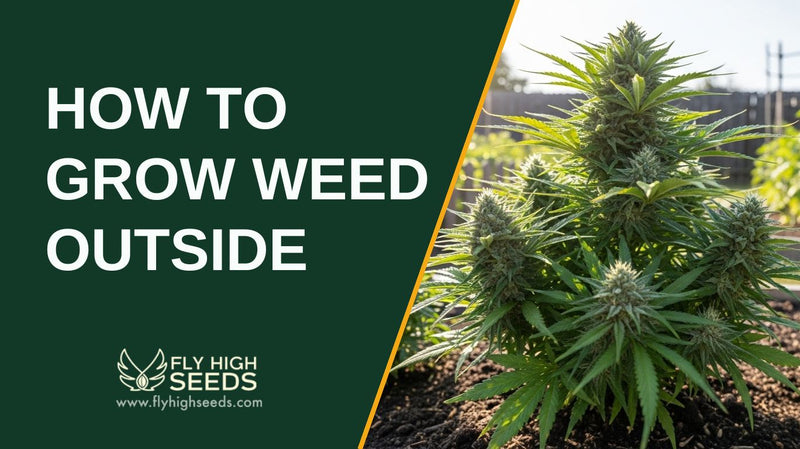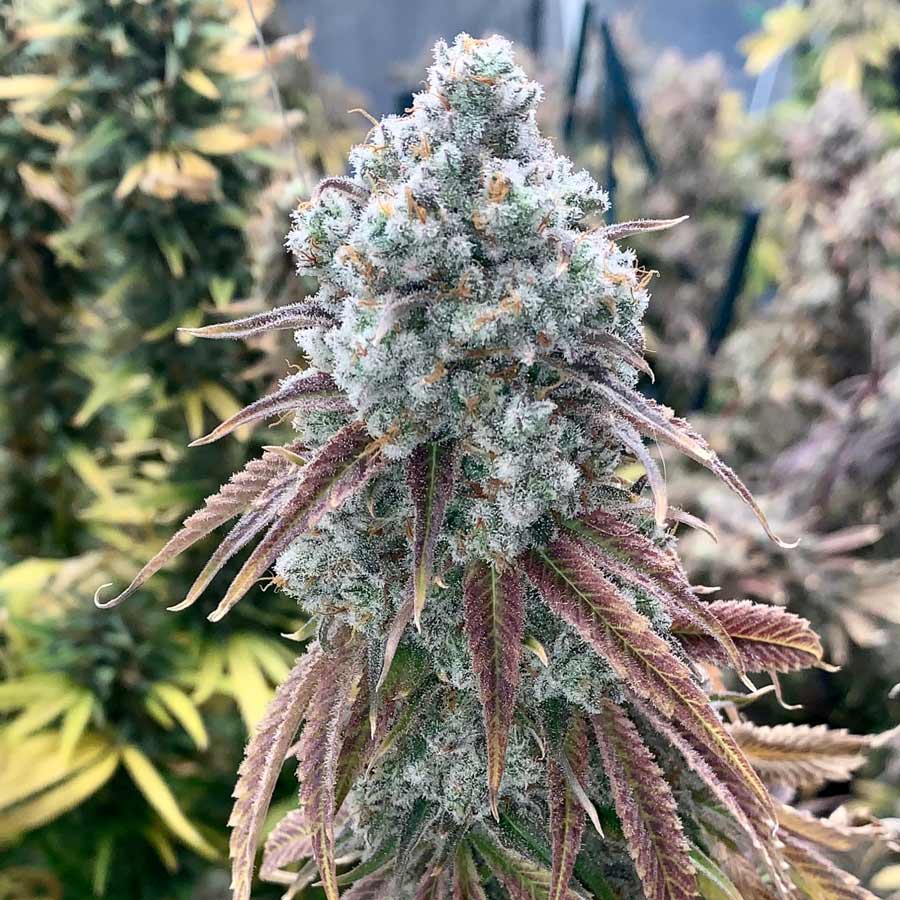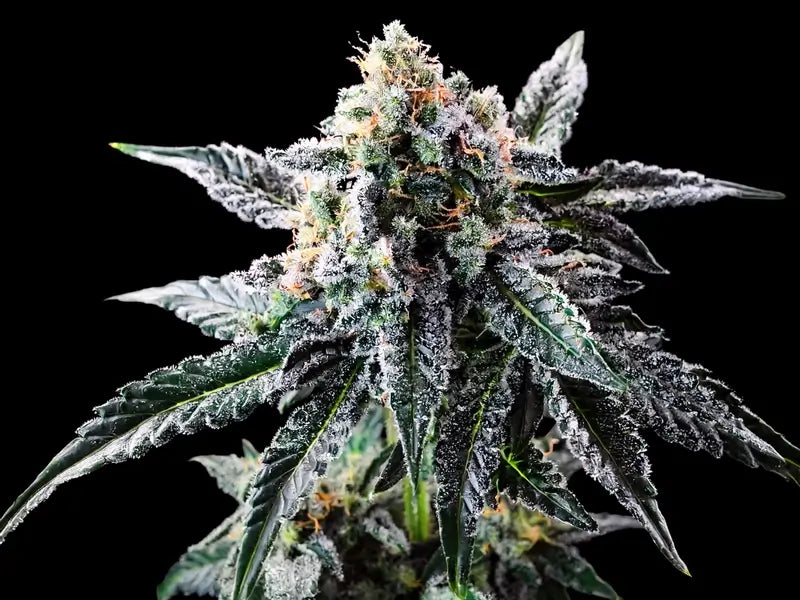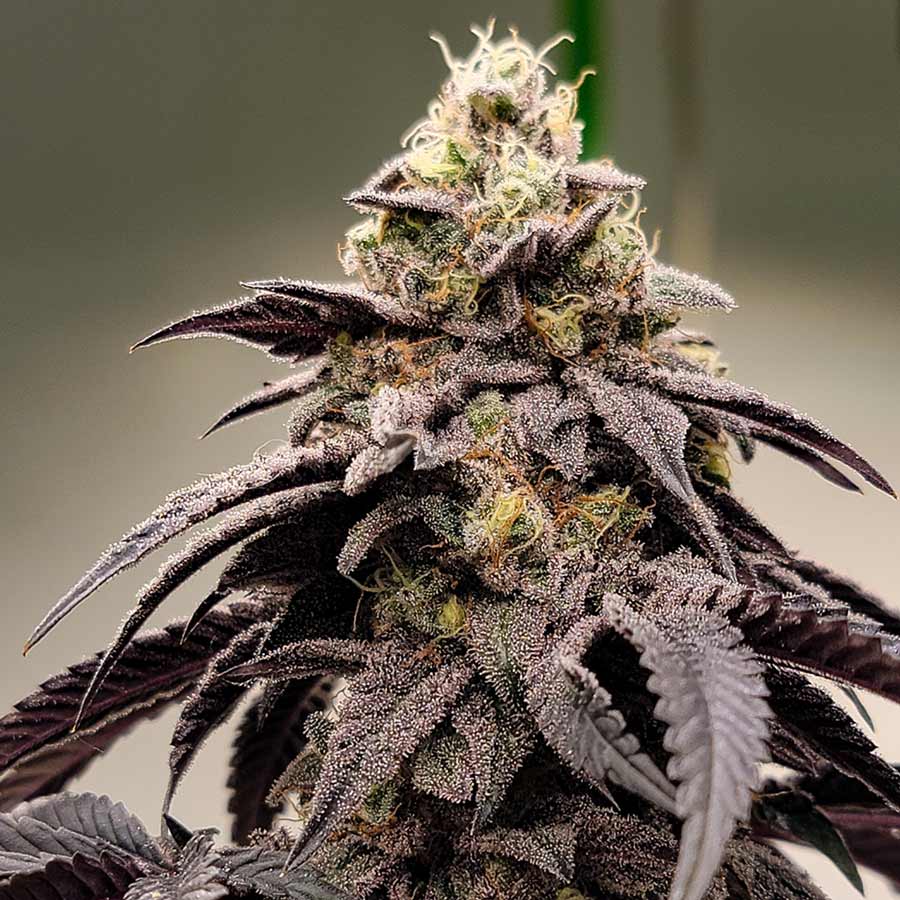How to Grow Weed Outside: 7 Expert Tips for Best Results

Growing cannabis outdoors is one of the most natural and cost-effective ways to cultivate strong, healthy plants. With access to direct sunlight, fresh air, and organic matter-rich soil, outdoor cannabis plants can thrive and produce generous yields when properly cared for.
Whether you're planting a few cannabis plants in your backyard or managing a larger garden setup, understanding the growing cycle, local laws, and environmental factors is key to success. In this guide, you'll learn expert tips to grow weed outside efficiently and legally — from seed to harvest.
How to Grow Weed Plants Outside
Outdoor cannabis cultivation offers a rewarding way to produce high-quality marijuana while keeping costs low. However, success depends on more than just placing seeds in the soil — it requires planning, attention to climate, and good gardening practices. Below is a step-by-step breakdown of how to grow weed outside effectively, with expert tips to guide you through each phase.
1. Understand Your Climate and Local Laws
Before you grow cannabis outdoors, know your region’s growing season, average day length, and weather patterns. In areas like New Mexico or parts of the southern hemisphere, the season may be longer, offering extended time for your plants to mature.
Expert Tip: Always check local laws regarding cannabis cultivation. Even a few cannabis plants can be considered an illegal grow if not permitted by your jurisdiction.
2. Choose the Right Seeds or Clones
Select high-quality cannabis seeds that are well-suited to outdoor growing conditions. Look for strains that are resistant to pests and mold and match your region’s climate.
Expert Tip: Feminized seeds ensure you won’t waste time identifying and removing male plants, which don’t produce buds and can pollinate female plants, reducing yield.
3. Prepare the Growing Area
Pick a location that receives at least 6–8 hours of direct sunlight daily. Raised beds, garden plots, or larger containers with excellent drainage work best as your primary growing medium.
Expert Tip: Improve your soil with compost, bone meal, worm castings, or fish emulsion. These organic fertilizers provide nutrients and support healthier plants throughout the growing cycle.
4. Germinate and Transplant Seedlings
Start your cannabis plants indoors or in a greenhouse to protect them during early growth. Once they reach a few inches in height and the risk of frost has passed, transplant them outdoors.
Expert Tip: Be gentle with the root ball during transplanting. Healthy roots are critical for nutrient uptake and preventing root rot.
5. Support Vegetative Growth
During the vegetative phase, plants need sufficient nutrients and water to build structure. Top dress the soil with organic matter, and ensure your plants are spaced well to promote airflow.
Expert Tip: Use coco coir mixed with soil for improved aeration and water retention. Watch for nutrient deficiencies like yellowing leaves, and adjust your feeding schedule accordingly.
6. Manage the Flowering Stage
As the days shorten in mid-summer, plants enter the flowering period. This is when buds begin to form, and your focus should shift to protection and precise nutrient delivery.
Expert Tip: Use a greenhouse or row covers if the weather turns unpredictable. Avoid overwatering and increase phosphorus and potassium for bigger, more resinous buds.
7. Harvest at the Right Time
Monitor trichomes on your cannabis flowers with a magnifying glass. When they turn from clear to milky and amber, it’s time to harvest. Dry and cure your buds in a dark, ventilated space.
Expert Tip: Harvest in the early morning when terpene levels are at their peak. Always trim and dry slowly to preserve flavor and potency.
Benefits of Growing Cannabis Outdoors

Outdoor growing isn't just practical — it offers a range of advantages that contribute to healthier plants and a more sustainable cultivation process.
- Cost-Effective: No need for expensive equipment like grow tents or artificial lighting — sunlight and rain do the heavy lifting.
- Natural Sunlight: Provides the full spectrum of light energy that cannabis plants need to thrive, resulting in robust growth and larger yields.
- Scalability: You can grow more plants outdoors without the spatial and electrical limitations of indoor setups.
- Eco-Friendly: Reduces your environmental impact by minimizing electricity use and allowing for the use of organic fertilizers and soil.
- Bigger Yields: Outdoor cannabis plants have room to grow and often produce more buds per plant due to unrestricted root development.
- Stronger Plants: Exposure to natural conditions helps develop resistance to pests and promotes durability and stress tolerance.
Essential Tools for Outdoor Cannabis Cultivation
To grow cannabis outdoors successfully, having the right tools on hand makes a big difference. From planting to harvest, these essentials support healthy development and simplify the growing process.
- pH Meter: Ensures your soil and water are within the optimal pH range for nutrient absorption.
- Hand Trowel & Pruners: Helps with transplanting, digging, and trimming your cannabis plants as they grow.
- Watering Can or Hose with Sprayer: Provides gentle, even watering without disturbing the soil or roots.
- Compost Bin: Supports sustainable gardening by creating nutrient-rich organic matter for top dressing.
- Grow Bags or Raised Beds: Offers better drainage and root control compared to planting directly in the ground.
- Garden Stakes or Trellis Netting: Keeps flowering plants upright and supported as buds develop.
- Protective Netting or Fencing: Deters animals and pests from damaging outdoor cannabis plants.
- Mulch or Straw: Regulates soil moisture and temperature, and helps prevent weed competition.
Final Thoughts

Growing weed outside is both rewarding and cost-effective, offering a natural path to cultivate strong, resinous buds with fewer resources than indoor setups. With the right timing, tools, and techniques, even beginners can produce great cannabis in their own backyard. Ready to get your hands in the soil? Start planning your outdoor grow today and watch your cannabis cultivation journey take root.
Start planning your outdoor grow today, study best practices for every stage of the process, and take the next step toward a successful harvest this season.
Frequently Asked Questions
How many cannabis plants can I grow legally outdoors?
The number of plants you can grow depends entirely on your local laws and regulations. Always check with your state or country’s cannabis cultivation guidelines before planting, as penalties for illegal grow operations can be severe.
Can I grow cannabis outdoors year round?
In most regions, outdoor growing follows a seasonal cycle due to changing temperatures and daylight. However, in warmer climates or with the use of greenhouses, it’s possible to grow cannabis year round with careful planning.
What pests or animals should I watch out for?
Common threats include aphids, spider mites, caterpillars, and larger animals like deer or rabbits. Use natural pest control methods and protective fencing to keep your cannabis plants safe.
Should I use tap water for my outdoor cannabis plants?
Tap water can be used, but it's best to test for pH and chlorine levels. Letting water sit for 24 hours before use can help dissipate chlorine and improve plant health.
What’s the best time of year to start growing outdoors?
In the northern hemisphere, late spring is ideal for transplanting seedlings outdoors once the last frost has passed. In the southern hemisphere, planting typically starts in early to mid-fall.



